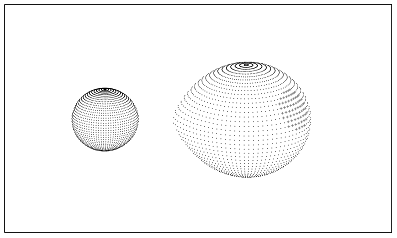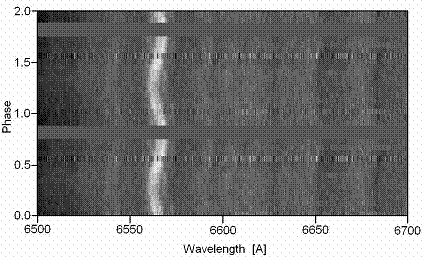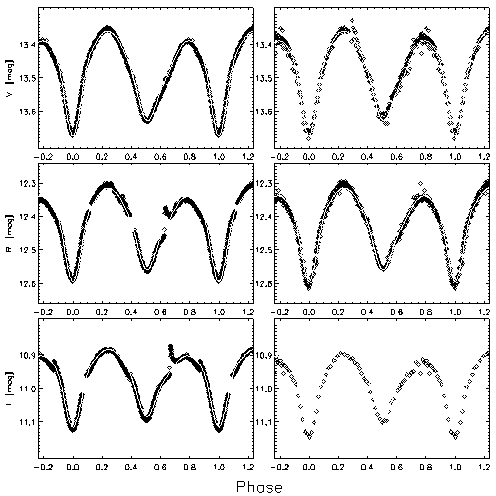Binary star with the shortest “year” was discovered
at NAO-Rozhen - GSC 2314 0530
September 22, 2010
The astronomers of National Astronomical Observatory Rozhen found that the star GSC 2314-0530 is binary system in which the two stars orbit around the common mass center and eclipse each other periodically. The measured orbital period of 0.1926 days on the photometric observations with 2-m and 60-cm telescopes means that GSC 2314-0530 is the shortest-period binary with regular (non-degenerate) stellar components.
Until ten years ago it was generally accepted that the low limit of the orbital periods is 0.22 days. Thå orbital period of GSC 2314-0530 is quite smaller than the foregoing limit and thus the new-discovered binary turns out a record-holder by this parameter. The only known astronomical objects with shorter orbital periods are the cataclysmic stars but they contain compact object (white dwarf or neutron star).
The orbital period of the star GSC 2314-0530 was confirmed by the spectral observations carried out with 2-m telescope of NAO-Rozhen. They reveal also that GSC 2314-0530 has another unique characteristic – its two stellar components are quite cooler, smaller and weaker than our Sun (temperatures 3445 K and 2886 K, masses 0.55 and 0.29 of solar mass, radii 0.57 and 0.36 of solar radius). They are so close that their mutual attraction has lead to distortions of their shapes (Fig. 1). On the basis of the observational data is calculated that the star is relative close to us – at distance of 163 light years.
The next peculiarity of the binary GSC 2314-0530 is that it reveals all appearances of stellar activity. There are wide emission lines of hydrogen (Fig. 2) in the spectra that is sign of its chromospheric activity. The distortions of its light curves (Fig. 3) speak about presence of photospheric spots, similar to those on our Sun, but considerably bigger in size. During the observations of the star at NAO-Rozhen several flares were registered (Fig. 3). They were similar to the solar flares but hundred thousands times more powerful. The strong flare activity of GSC 2314-0530 is confirmed by its X-ray flares registered by the space mission ROSAT.
The study of the new-discovered short-period eclipsing binary GSC 2314-0530 presents a next small step toward understanding of the cool stars. Recently they attract the attention of the scientists more and more as appropriate targets for exoplanet searches.
The research of the star GSC 2314-0530 was made by the wholly Bulgarian team in the framework of the joint project DO 02-362 (SMARTNET) of Institute of Astronomy and Shumen University financed by the Scientific Foundation of the Bulgarian Ministry of education and Science.
More information can be found in the paper
“GSC2314-0530: the shortest-period eclipsing system with dMe components”,
Dinko Dimitrov, & Diana Kjurkchieva, 2010, Monthly Notices of the Royal Astronomical Society, 406, 2559.
The results obtained at NAO Rozhen attract the attention of a good many astronomers including those of the scientific team of the space telescope Kepler (Coughlin J. et al., arXiv 1007.4295v2 [astro-ph.SR] 28 Jul 2010).

Fig. 1. 3D model of GSC 2314-0530 with distorted components obtained as a result of
analysis of the observational data from NAO-Rozhen

Fig. 2. Orbital variability of the spectrum of GSC 2314-0530
obtained by 2-m telescope of NÀÎ-Rozhen
|
|
Fig. 3. Light variability of GSC 2314-0530 due to mutual eclipses registered by
the telescopes of NAO-Rozhen.
